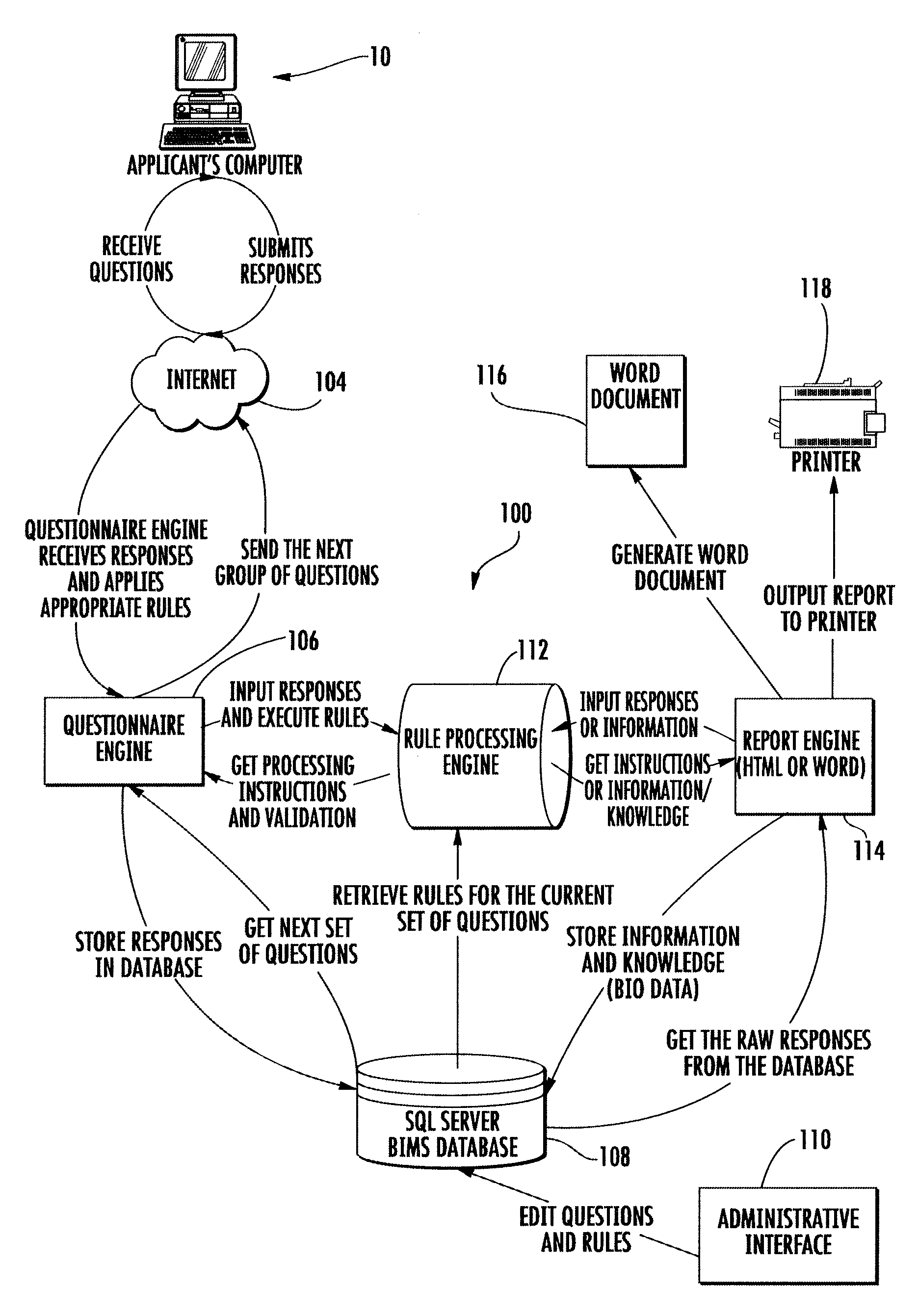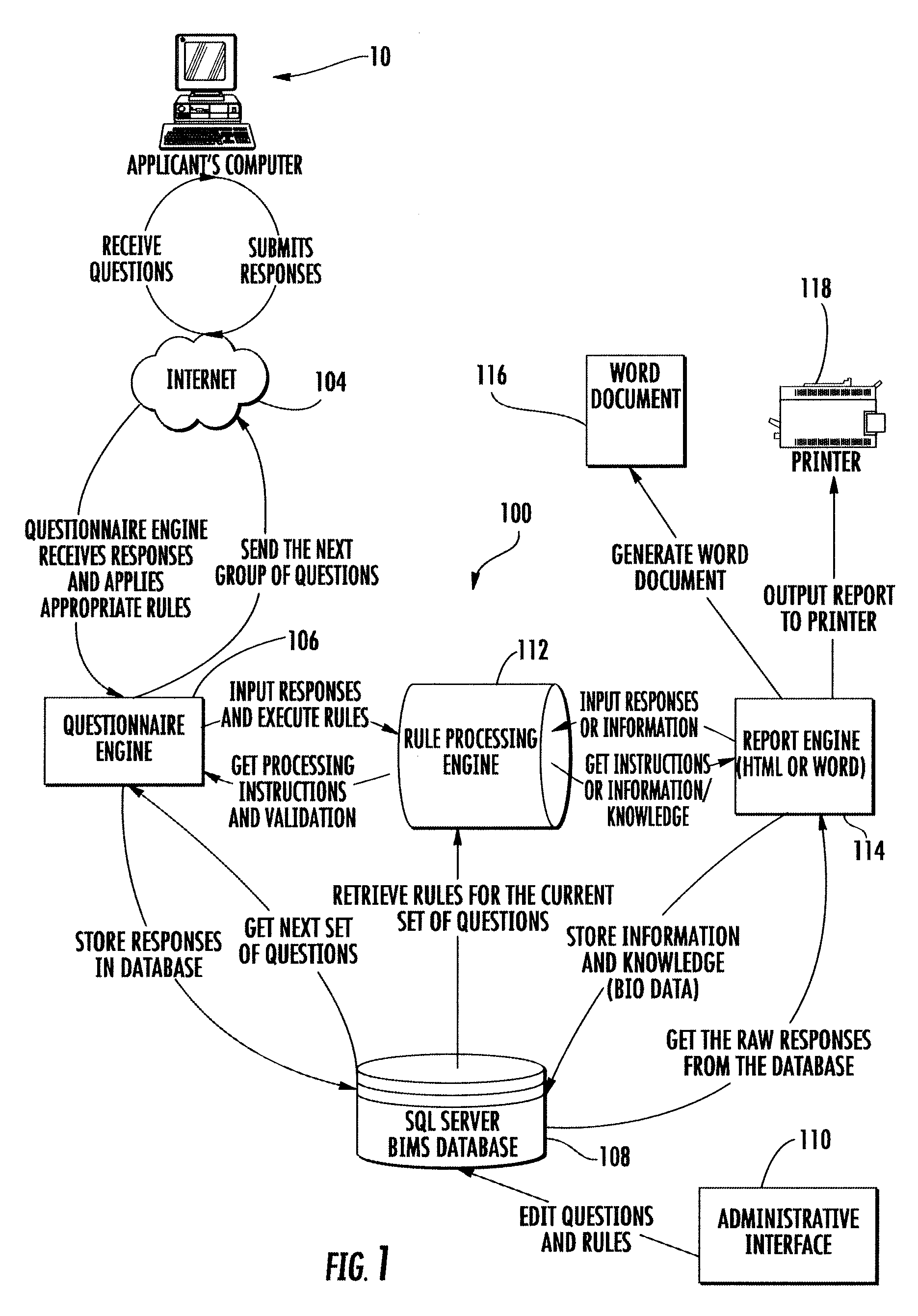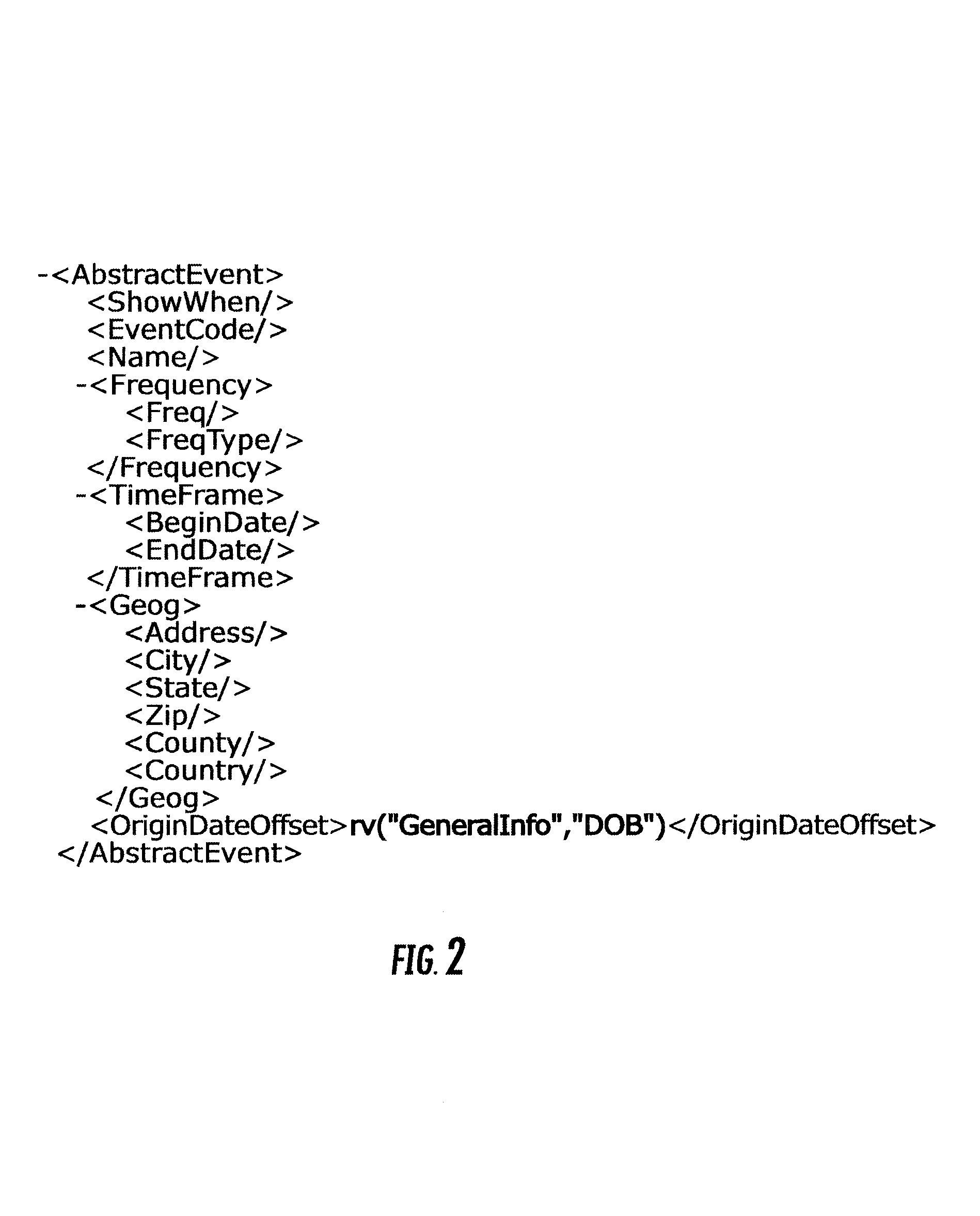System, method and computer readable medium for acquiring and analyzing personal history information
a technology of personal history applied in the field of system, method and computer readable medium for acquiring and analyzing personal history information, can solve the problems of difficult to objectively compare and evaluate these findings, acquiring background information in an accurate and efficient manner, and achieving efficient and objective evaluation of background information. , to achieve the effect of enhancing the veracity of acquired life history information and minimizing the positive response bias
- Summary
- Abstract
- Description
- Claims
- Application Information
AI Technical Summary
Benefits of technology
Problems solved by technology
Method used
Image
Examples
Embodiment Construction
[0036]In view of the complexity of the invention, the overall architecture of the invention is first discussed. Next, specific components of the invention, such as the questionnaire engine, the rule processing engine, the life event engine and the critical items engine are considered. Examples of reports generated by the system are also discussed to better illustrate the invention.
[0037]In the following description, like reference characters designate like or corresponding parts throughout the several views. It should be understood that the illustrations are for the purpose of describing a preferred embodiment of the invention and are not intended to limit the invention thereto.
Overview
[0038]FIG. 1 illustrates the overall architecture of the background information management system 100 of the present invention. In response to input received from the user, a personal computer 102 running a browser requests a set, or cluster, of questions via a communications network 104, such as the ...
PUM
 Login to View More
Login to View More Abstract
Description
Claims
Application Information
 Login to View More
Login to View More - R&D
- Intellectual Property
- Life Sciences
- Materials
- Tech Scout
- Unparalleled Data Quality
- Higher Quality Content
- 60% Fewer Hallucinations
Browse by: Latest US Patents, China's latest patents, Technical Efficacy Thesaurus, Application Domain, Technology Topic, Popular Technical Reports.
© 2025 PatSnap. All rights reserved.Legal|Privacy policy|Modern Slavery Act Transparency Statement|Sitemap|About US| Contact US: help@patsnap.com



